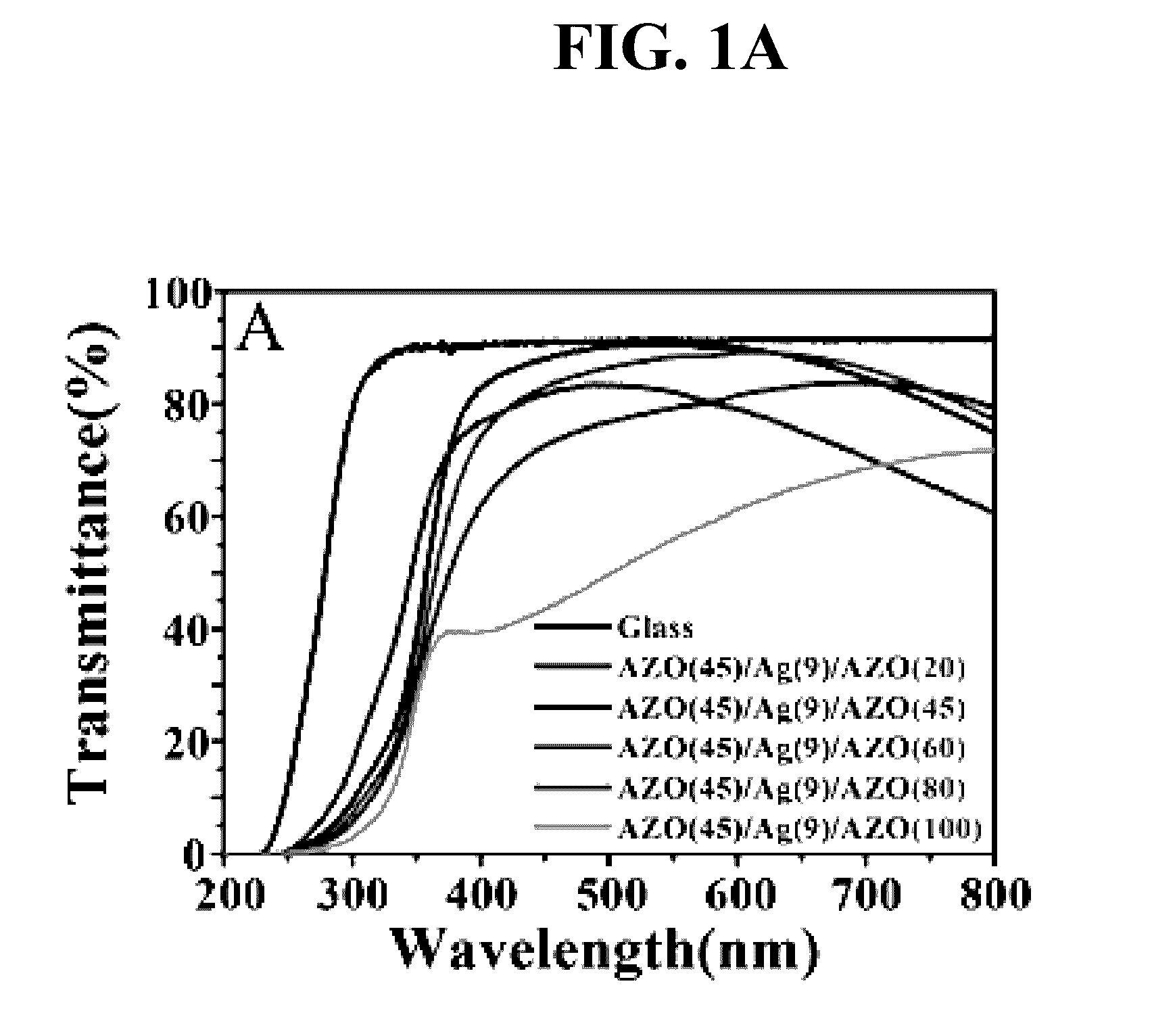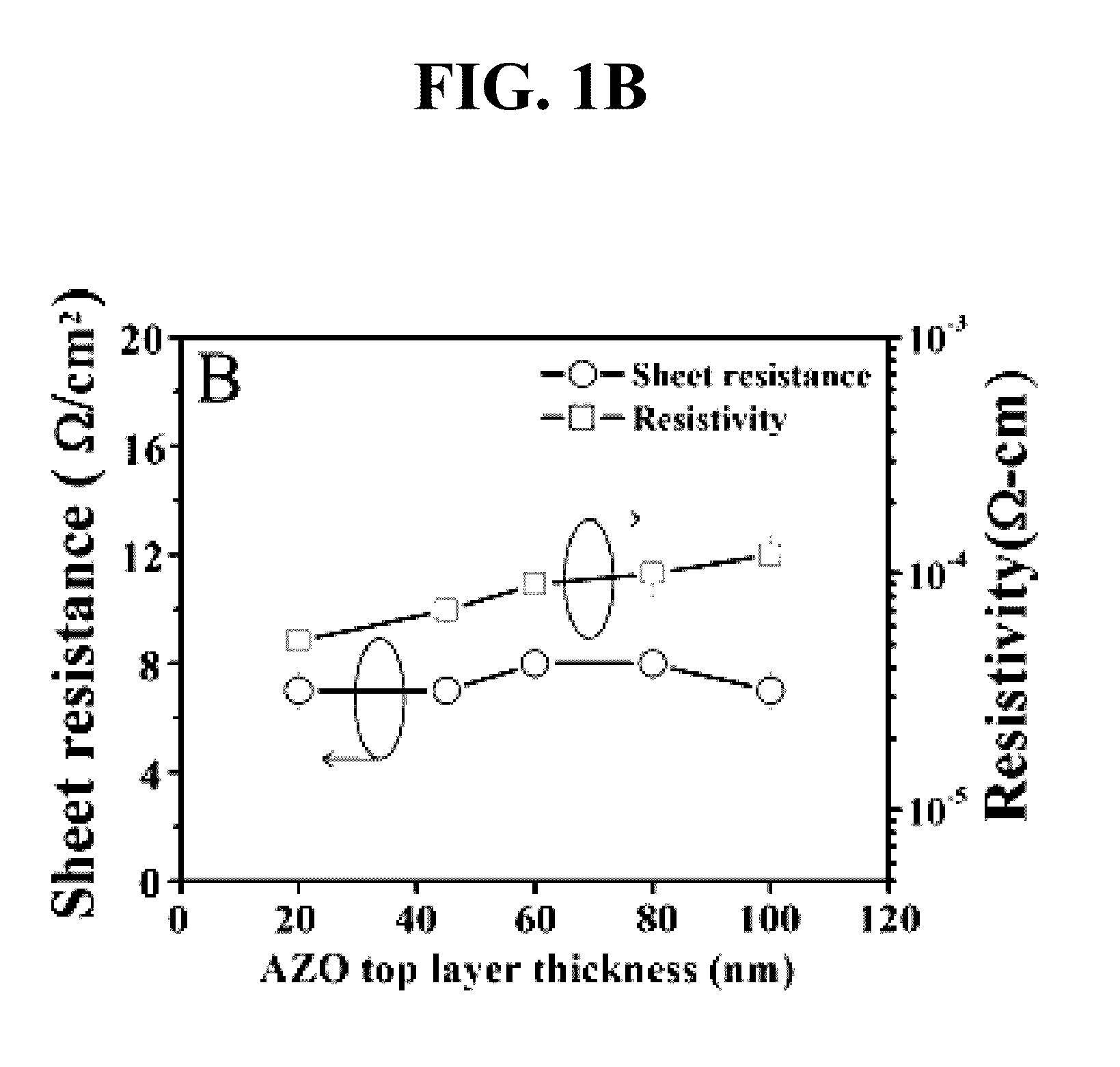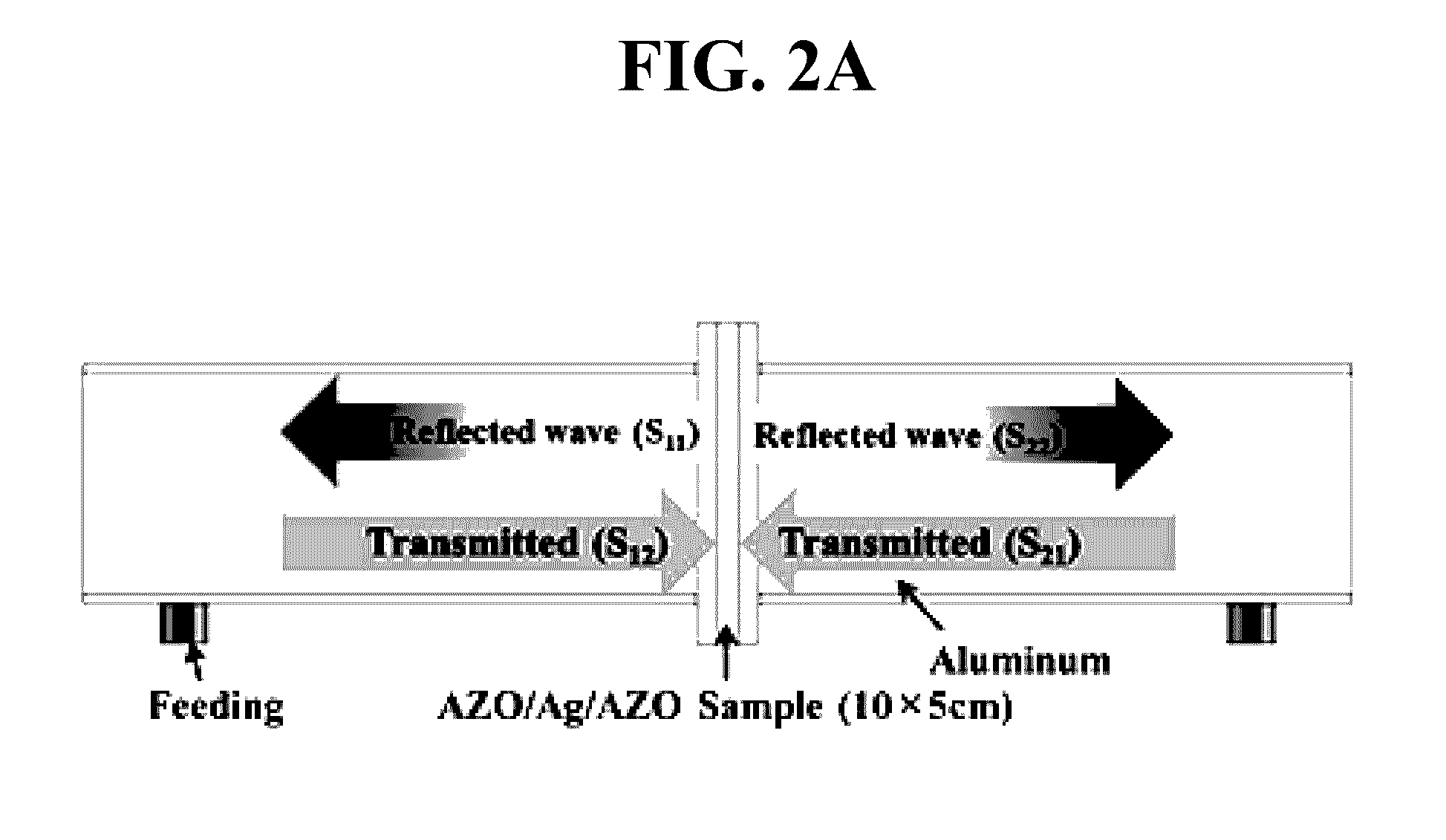Optically transmissive antimicrobial glass with shielding effect for electromagnetic wave
a technology of electromagnetic wave shielding and antimicrobial glass, which is applied in the field of antimicrobial glass, can solve the problems of reducing the life of the product, reducing the temperature of the living tissue, and reducing the immune function, so as to achieve long heat treatment time, maintain or even slightly enhance the effect of performan
- Summary
- Abstract
- Description
- Claims
- Application Information
AI Technical Summary
Benefits of technology
Problems solved by technology
Method used
Image
Examples
example 1
Preparation of Glass Substrate with AZO / Ag / AZO Multilayer Thin Film
[0030]A toughened glass substrate (5 cm×10 cm×70 μm, Corning Gorilla) is washed out and removed of foreign substances from the surface using the N2 gas. Then, an AZO thin film is deposited at the room temperature according to the RF sputtering method. In the deposition process, the AZO target (2 inches in diameter) is a ZnO target doped with 2 wt. % of Al and then sintered at 1,500° C. using the ceramic process (purity: 99.99%). The deposition process is carried out by applying the RF power of 100 W to the target, with the working pressure of 0.13 Pa, the deposition rate of about 1 nm / min and the Ar gas of 10 sccm (standard cc / min) used as a sputtering gas. The thickness of the AZO thin film is controlled by the deposition time.
[0031]On the AZO thin film is in-situ deposited an Ag thin film as thick as 9 nm at the room temperature according to the DC sputtering method. In the deposition process, the target is an Ag t...
example 2
Comparison of Optical / Electrical Characteristics of AZO / Ag / AZO Multilayer Thin Film Depending on Thickness of AZO Thin Film
[0033]The glass substrate with the multilayer thin film as prepared in Example 1 is measured in regards to the optical transmittance with an HP 8453 UV-VIS spectrophotometer. The measurement results are presented in FIG. 1A.
[0034]In a pretest for the AZO / Ag / AZO multilayer thin film formed on the toughened glass substrate, the Ag layer formed on the AZO thin film has a non-continuous structure when it is less than 9 nm in thickness, and is continuously deposited when it has a thickness of 9 nm or greater. Accordingly, the optical transmittance gradually increases with an increase in the thickness of the Ag layer from 3 nm to 9 nm, but gradually decreases at the thickness of the Ag layer exceeding 9 nm, and abruptly reduces at the thickness of the Ag layer greater than 15 nm. Thus, the thickness of the Ag layer is fixed at 9 nm.
[0035]FIG. 1A is a graph showing the...
example 3
Evaluation of Electromagnetic Shielding Characteristic for Glass Substrate with AZO / Ag / AZO Multilayer Thin Film
[0037]The glass substrate with the multilayer thin film as prepared in Example 1 is measured in regards to the electromagnetic shielding characteristic in the wavelength range of 1.5 to 3 GHz with an HP Agilent E8363A according to the two-port method. FIG. 2A is a mimetic diagram of an electromagnetic shielding waveguide.
[0038]For a comparison of the electromagnetic shielding characteristic, a Cu film having a thickness of 60 μm is measured in regards to the electromagnetic shielding characteristic under the same conditions. The measurement, S12 value is used to determine the electromagnetic shielding effectiveness according to the following equation. The calculation results are presented in FIGS. 2B, 2C and 3. In FIG. 3, the red dots denote the calculated values of the electromagnetic shielding effectiveness for the Cu film 60 μm thick that is a control.
EMISE=10log1S122=10...
PUM
| Property | Measurement | Unit |
|---|---|---|
| thickness | aaaaa | aaaaa |
| thickness | aaaaa | aaaaa |
| contact angle | aaaaa | aaaaa |
Abstract
Description
Claims
Application Information
 Login to View More
Login to View More - R&D
- Intellectual Property
- Life Sciences
- Materials
- Tech Scout
- Unparalleled Data Quality
- Higher Quality Content
- 60% Fewer Hallucinations
Browse by: Latest US Patents, China's latest patents, Technical Efficacy Thesaurus, Application Domain, Technology Topic, Popular Technical Reports.
© 2025 PatSnap. All rights reserved.Legal|Privacy policy|Modern Slavery Act Transparency Statement|Sitemap|About US| Contact US: help@patsnap.com



